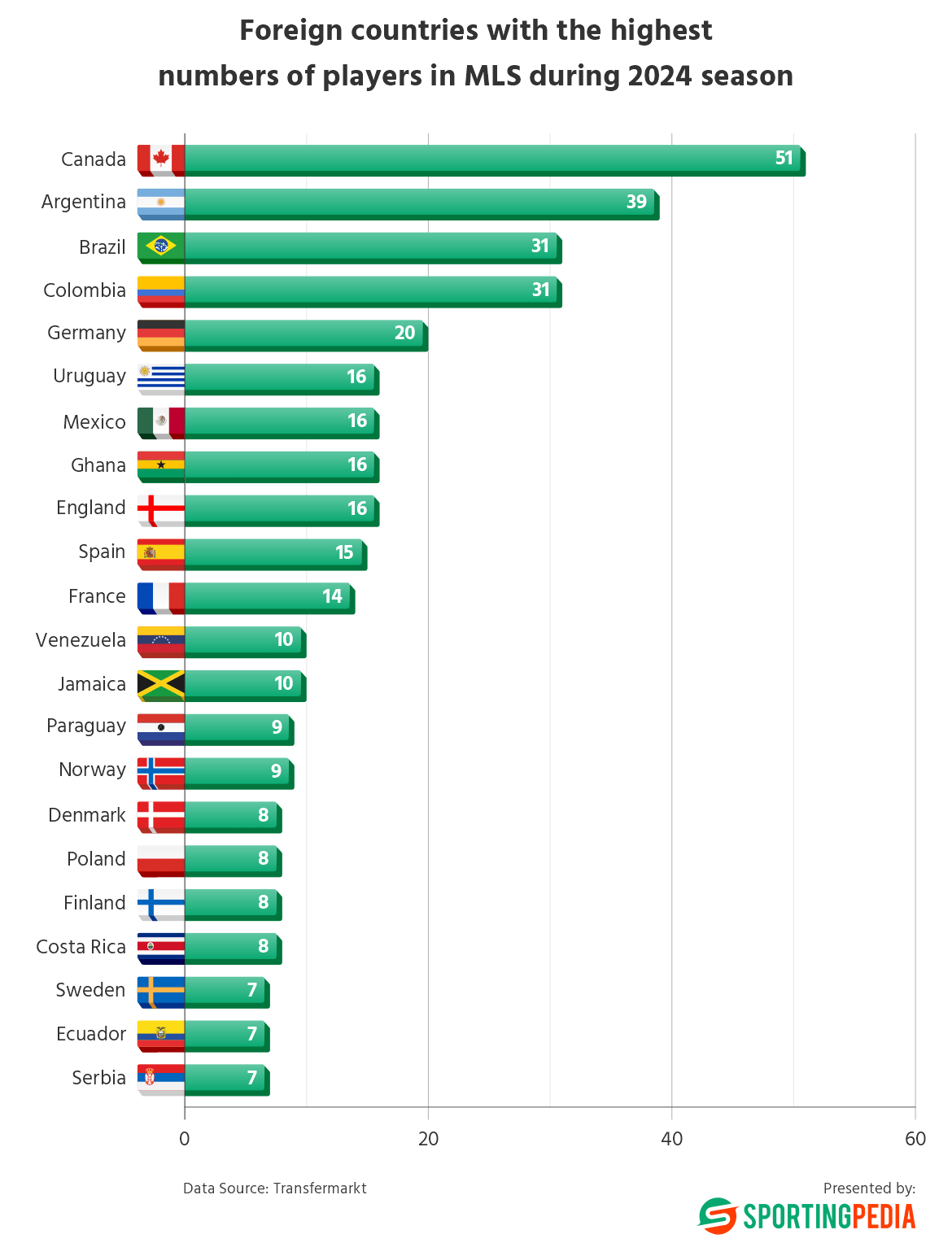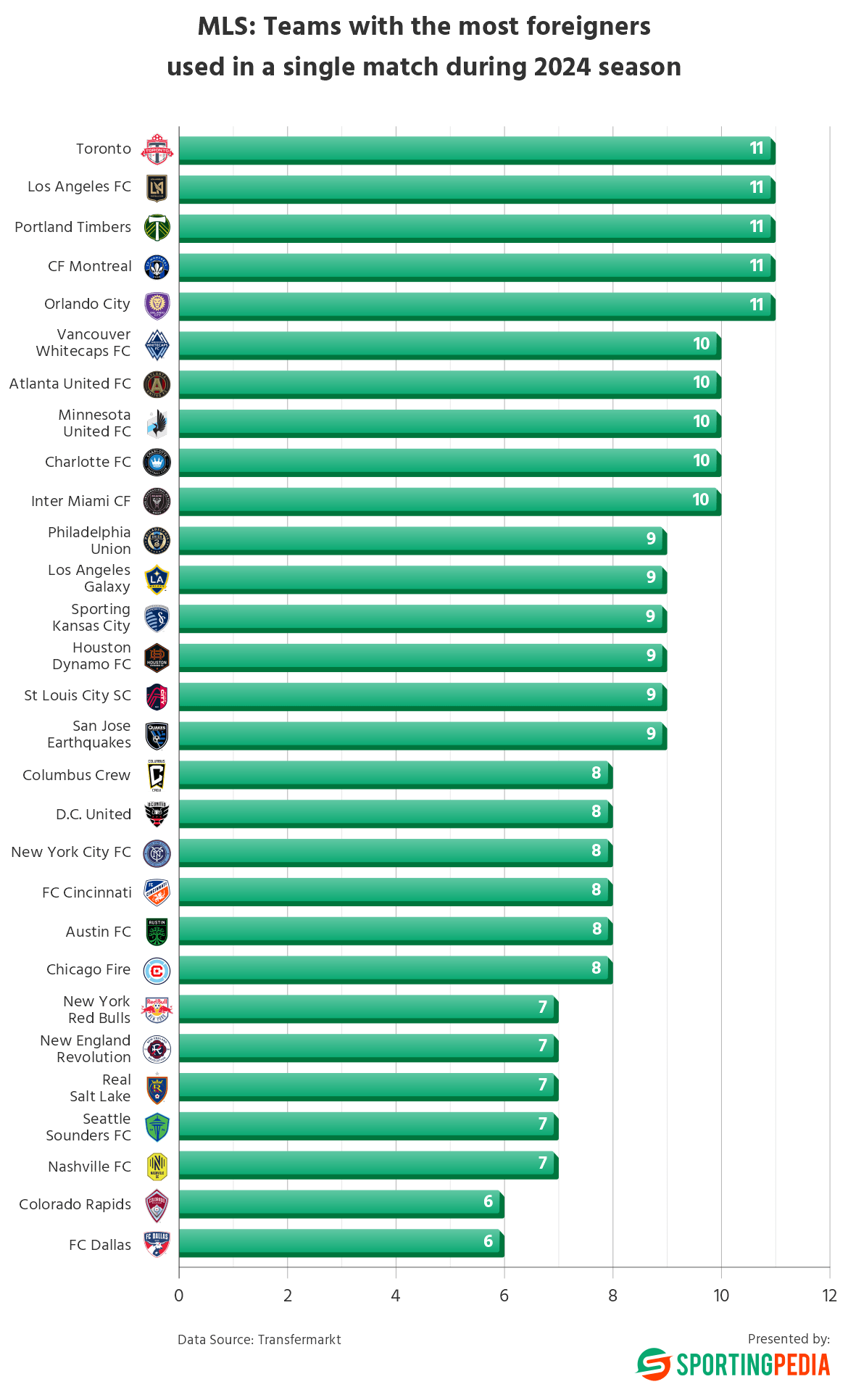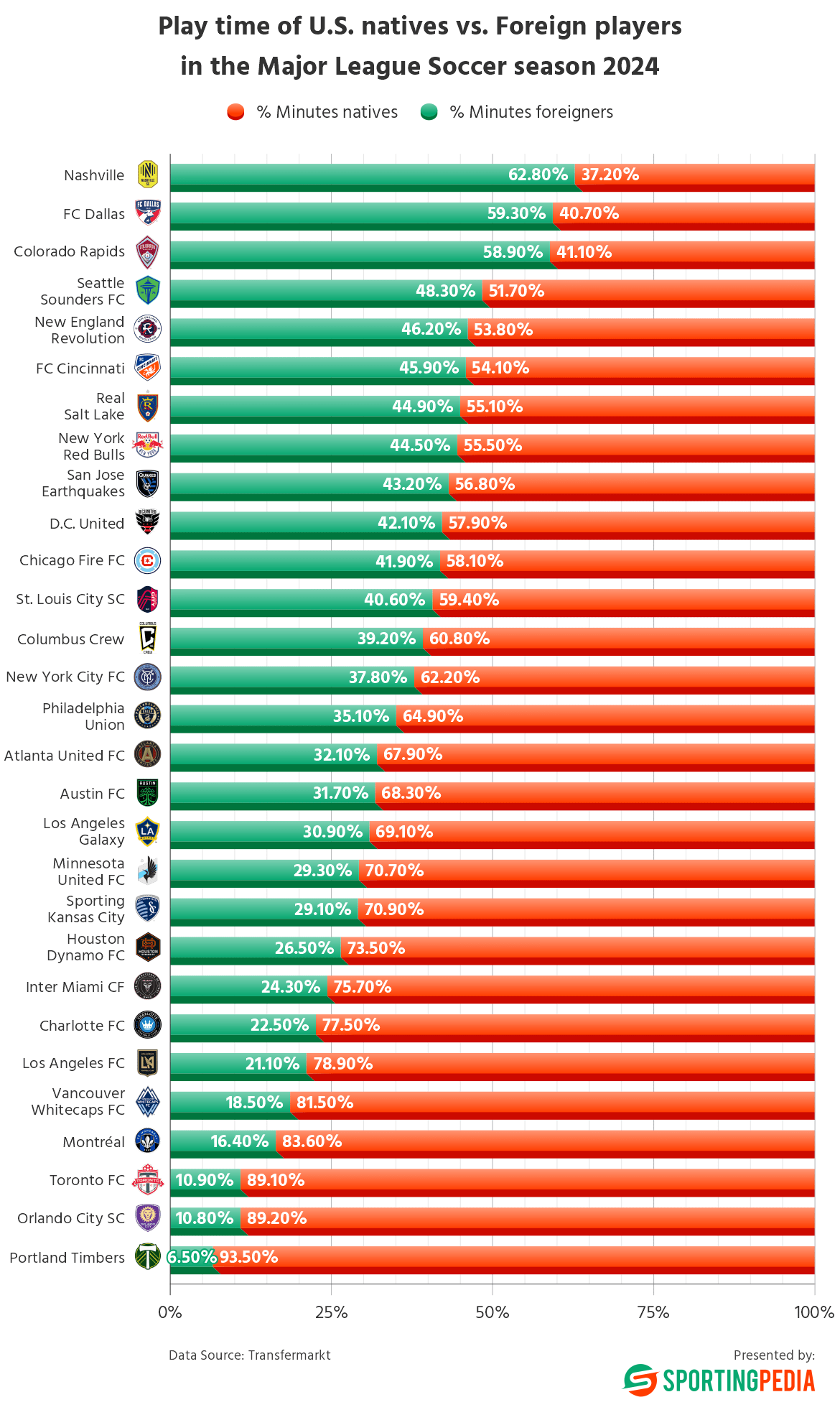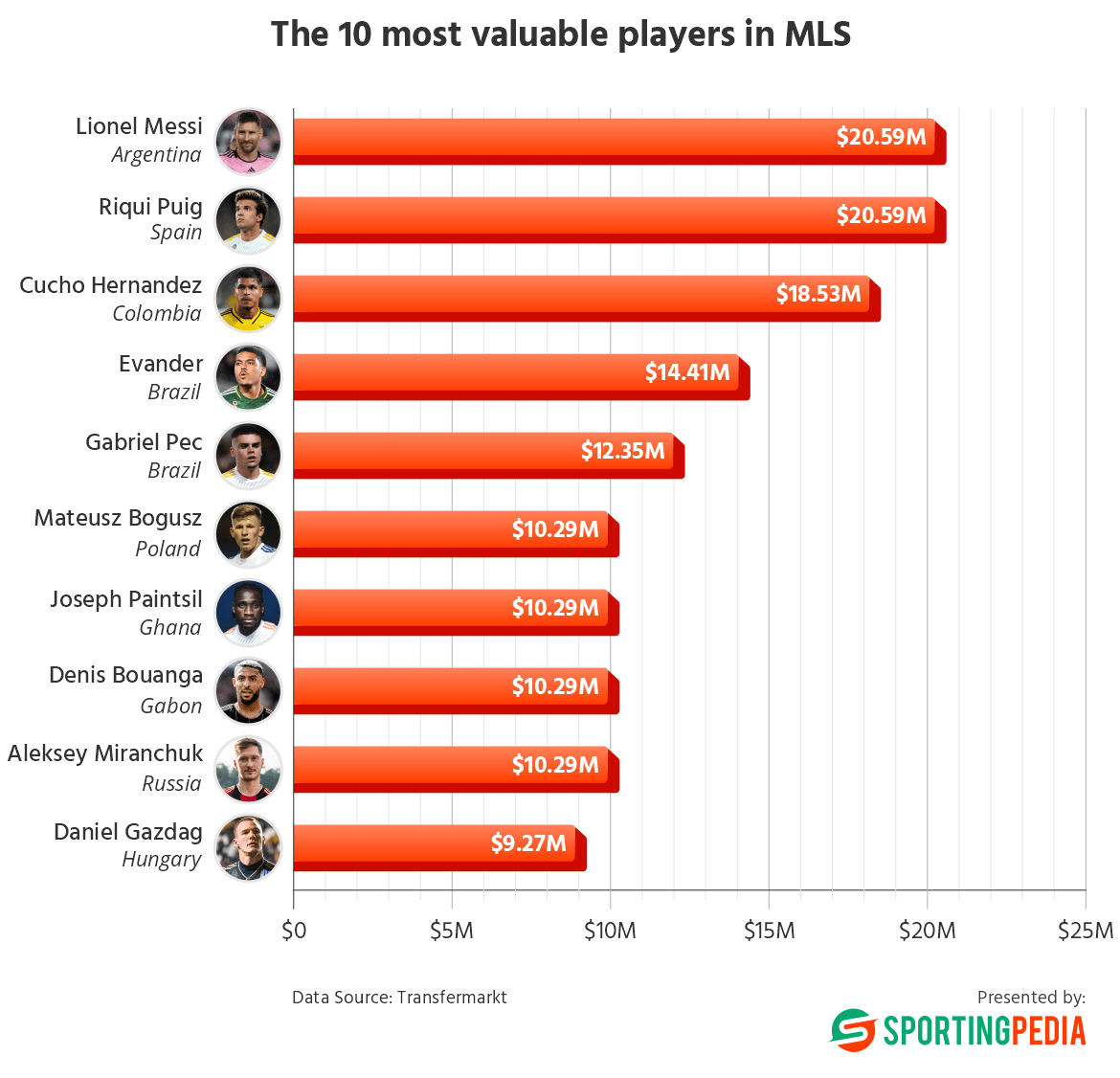Lionel Messi’s historic presence in Major League Soccer (MLS) drew global attention in 2024, as he led Inter Miami to first place in the regular season, only to suffer a surprising early playoff exit. Meanwhile, Los Angeles Galaxy claimed the championship in a nation preparing to host the next World Cup in two years. These milestones prompted Sportingpedia to a deeper investigation into the role of foreign players in the MLS, examining which countries were best represented, which teams favored local talent or international stars, and how playing time was allocated.
The 2024 season underscored the league’s reliance on talent from abroad, with 233 international roster slots allocated across the 29 clubs. However, over 400 foreign players were part of the different organizations, reflecting the flexibility of roster management that allows clubs to exceed their official slots. The findings revealed striking contrasts: Nashville SC emerged as the team most reliant on U.S. talent, granting over 60% of playing time to domestic players, while Portland Timbers allocated just 6.5% to them. Canada topped the list of foreign representation with 51 players, followed by Argentina (39), Brazil and Colombia (31 each), and Germany (20), highlighting the league’s diverse international footprint.
- During the 2024 season, excluding U.S. players, Canada led the MLS in player representation with 51 players, followed by Argentina with 39, and Brazil and Colombia, each contributing 31 players
- Germany had 20 players represented in the MLS, the most of any European country
- Ghana was the most represented African country in the MLS, with 16 players
- Toronto FC, Los Angeles FC, Portland Timbers, CF Montreal, and Orlando City were the five teams that fielded an entirely foreign starting lineup in at least one match during the 2024 season
- Nashville and FC Dallas used the lowest number of talent from abroad, fielding no more than 6 foreign players simultaneously
- The Portland Timbers dedicated 93.5% of their playing minutes to foreign players, the highest percentage in the league
- Nashville were the team that relied the most on local talent, providing more than 60% of the game time to US players
- On their way to becoming champions, Los Angeles Galaxy utilized 9 foreign players
- The star-studded Inter Miami fielded 10 foreign players, including the former Barcelona quarter of Lionel Messi, Luis Suarez, Sergio Busquets, and Jordi Alba
- Diego Luna was the highest-valued US player in MLS, but his estimate of $6.17 million put him in 30th position overall
Key Takeaways:


Canada led the representation with 51 players, followed by Argentina with 39 players, Brazil with 31 players, and Colombia with 31 players. Germany had the highest number of European representatives with 20 players. Among the African countries, Ghana had 16 players. Japan contributed 6 players from Asia, while South Korea had 1 player. In Oceania, Australia had 5 players and New Zealand had 4 players.


Team strategies regarding foreign player utilization varied significantly. Clubs like Toronto FC, Los Angeles FC, Portland Timbers, CF Montreal, and Orlando City fielded entirely foreign starting lineups in at least one match, highlighting their dependence on international talent. Los Angeles Galaxy, the eventual champions, utilized 9 foreign players, while Inter Miami, led by Lionel Messi, fielded 10 foreigners. However, their season ultimately ended in disappointment, as they exited in the first playoff round. In contrast, teams like Colorado Rapids and FC Dallas adopted a more conservative approach, limiting their use of foreign players to no more than 6 at a time, thereby prioritizing homegrown talent and adhering to a “Made in US” philosophy.


In terms of playing minutes, some teams relied heavily on international talent. Toronto FC, Orlando City, and Portland Timbers dedicated over 85% of their playing minutes to foreign players, with Portland topping the league with 93.5% of its minutes given to non-local talent. On the other hand, teams like Colorado Rapids and FC Dallas leaned more heavily on local talent, using a maximum of 6 foreign players at a time and giving nearly 60% of their playing time to Americans. Nashville SC, FC Dallas, and Colorado Rapids prioritized local talent, giving more than 40% of their playing time to US-born players, with Nashville, Dallas, and Colorado being the only three teams to allocate more than 50% of their playing minutes to US-born players.


The reliance on foreign players had a significant impact on team performances and player valuations. Foreign stars dominated the league’s valuation rankings, with Lionel Messi and Riqui Puig topping the list at $20 million each. The top 10 most valuable players in the MLS were all foreigners, with 4 players from Latin America, 4 from Europe, and 2 from Africa. Notably, the highest-ranked American player, Diego Luna, was ranked outside the top 30, emphasizing the significant gap between local and international talent in terms of market value.
